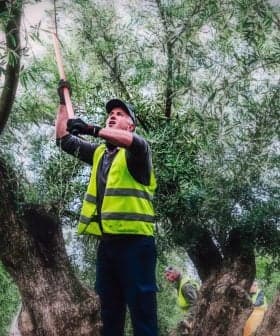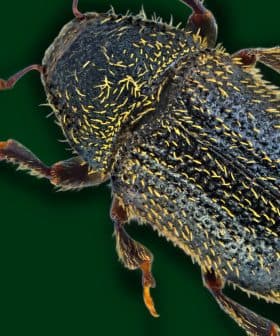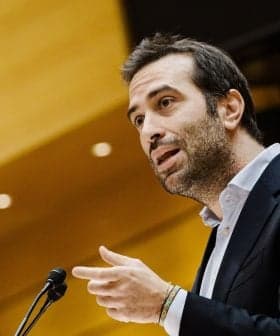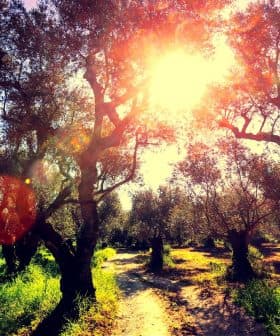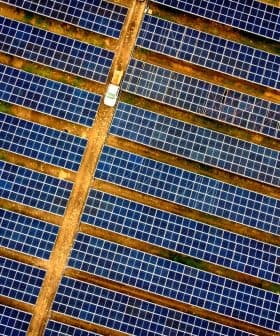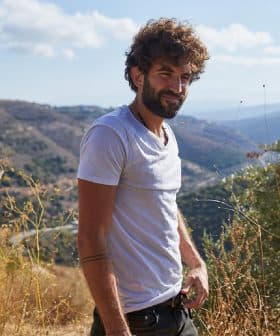Olive Council Tests Plan to Help Olive Farmers Sell Carbon Credits

The International Olive Council has launched a Carbon Balance project pilot phase, allowing olive growers and stakeholders to participate until May 30th. The project aims to assess olive groves as natural carbon sinks, allowing farmers to generate carbon credits and increase their income while promoting sustainable land management.
Olive growers, cooperatives, universities and other stakeholders involved in olive cultivation have until May 30th to participate in the global Carbon Balance project pilot phase recently launched by the International Olive Council (IOC).
During the pilot phase, participants will be able to calculate the carbon balance of their olive grove using a free online tool, receive technical assistance, and provide feedback.
“In the first 24 hours after the application window opened, we received submissions from more than ten countries, covering over 1,000 hectares and all planting systems,” said Juan Antonio Polo Palomino, head of the IOC’s Olive Oil Technology and Environment Department.
The project aims to assess olive groves as natural carbon sinks.
See Also:Organic Farm in Jaén Blazes a Trail for Selling Carbon Credits“The Carbon Balance project is key to showcasing the sustainability of our sector,” added Lhassane Sikaoui, head of the IOC’s Olive Growing, Olive Oil Technology and Environment Unit.
As the initiative progresses, farmers will be able to increase their incomes by selling carbon credits on voluntary markets.
Carbon credits for olive groves are an emerging opportunity in sustainable agriculture.
Olive trees naturally absorb and store carbon dioxide through photosynthesis, and healthy soils — especially those managed using regenerative practices — can amplify this effect.
According to the IOC, olive groves’ carbon dioxide storage capacity is both stable and long-lasting.
“Until recently, agriculture was seen solely as a greenhouse gas emitter,” the IOC said, referencing the latest Intergovernmental Panel on Climate Change report. “However, the 2023 IPCC report recognized its potential to absorb carbon dioxide, creating new financial opportunities for sectors like olive growing.”
By quantifying the amount of carbon an olive grove removes from the atmosphere, farmers can generate carbon credits that can be sold to companies seeking to offset their emissions.
This system provides an additional income stream and promotes more sustainable land management. However, a clear legal framework supported by robust certification and verification platforms is essential to make this system work.
“During the pilot phase, participants will be able to calculate the carbon balance of their olive grove using a free online tool, receive technical assistance, and provide feedback,” Polo Palomino explained.
“This will help us validate the tool’s usability and make any necessary improvements based on participants’ input,” he added.
Once all registrations are in, the project’s scientific team will design a broad sample to reflect different cultivation areas, olive grove types, management practices, and climate conditions.
To participate, farmers and cooperatives must provide data on their agricultural practices, such as fuel use and fertilizer applications.
“Our goal is to make the tool user-friendly, so we designed a simple interface using data that farmers already manage daily,” Polo Palomino said. “For instance, those who keep a field notebook will already have nearly all the required data.”
Participation in the pilot phase is completely free. This includes the training session and online technical support provided by the IOC.
“Once validated and released, the tool will be freely accessible to any user worldwide,” Polo Palomino said.
The IOC’s carbon balance calculator is based on the IPCC’s 2019 General Guidelines for National Greenhouse Gas Inventories.
“We adapted it to the specific characteristics of olive trees, drawing on the best available scientific knowledge and tested models to ensure maximum robustness,” Polo Palomino said.
“We also built on the IOC’s previous work, including the 2018 report on the global CO2 capture potential of olive groves and the first version of the calculator published in 2012,” he added.
Once the carbon balance is calculated, the Verra VM0042 v2.1 standard is applied to generate carbon credits.
Verra is one of the leading organizations certifying carbon credits, and VM0042 specifically focuses on improved agricultural land management.
Version 2.1 outlines how to measure, monitor, and verify carbon sequestration to ensure scientific and technical validity.
The process complies with European Union Regulation 2024/3012, establishing certification guidelines for carbon removals within the E.U.
The pilot phase includes a technical training session in June. “The session will explain in detail the flow of a voluntary carbon credit project, the criteria used in this methodology, and the tool itself through practical examples,” Polo Palomino said.
“We aim to ensure that participants can begin working with the tool right after the session,” he added.
The next phase is expected to launch in November.
“In November, once the tool is validated and results verified, we plan to release a free and accessible method that allows any olive grower, regardless of size, type, location, or management system, to calculate their carbon balance and generate voluntary carbon credits aligned with current and upcoming standards, especially the E.U.’s CRCF (Carbon Removals and Carbon Farming) framework,” Polo Palomino said.
The IOC’s ambitions go beyond offering a groundbreaking tool to the olive sector.
“Our goal is to ensure society recognizes olive groves as agro-ecosystems that, in addition to producing the best vegetable fat known to humanity, extra virgin olive oil, also provide ecosystem services that benefit human well-being, such as helping combat climate change and contributing to planetary health,” Polo Palomino said.
“In short, everyone should understand that consuming extra virgin olive oil is good for both their health and the planet,” he added.
According to the IOC, this project will make a real contribution to addressing climate change. “We begin from scientific evidence: olive groves, domesticated by agriculture, now cover 11 million hectares, mostly in the Mediterranean region,” Polo Palomino said.
“Through certain agricultural practices, we can optimize their function, improving their net CO2 balance and contributing to the U.N. goal of climate neutrality by 2050.”
Expectations around the market potential of voluntary carbon credits have grown since the latest IPCC report and the introduction of new EU regulations.
Still, the IOC urges cautious optimism.
“These expectations are still risky, as regulatory processes are ongoing at both the standard and market levels,” Polo Palomino said. “At the IOC, we’re working hard to deliver a scientifically sound system that meets the needs of our sector.”
“The project’s first phase focuses on developing an easy-to-use carbon balance calculator for all olive sector stakeholders,” Sikaoui concluded. “As the pilot phase moves forward, we invite all operators to join in and help strengthen this vital initiative.”


